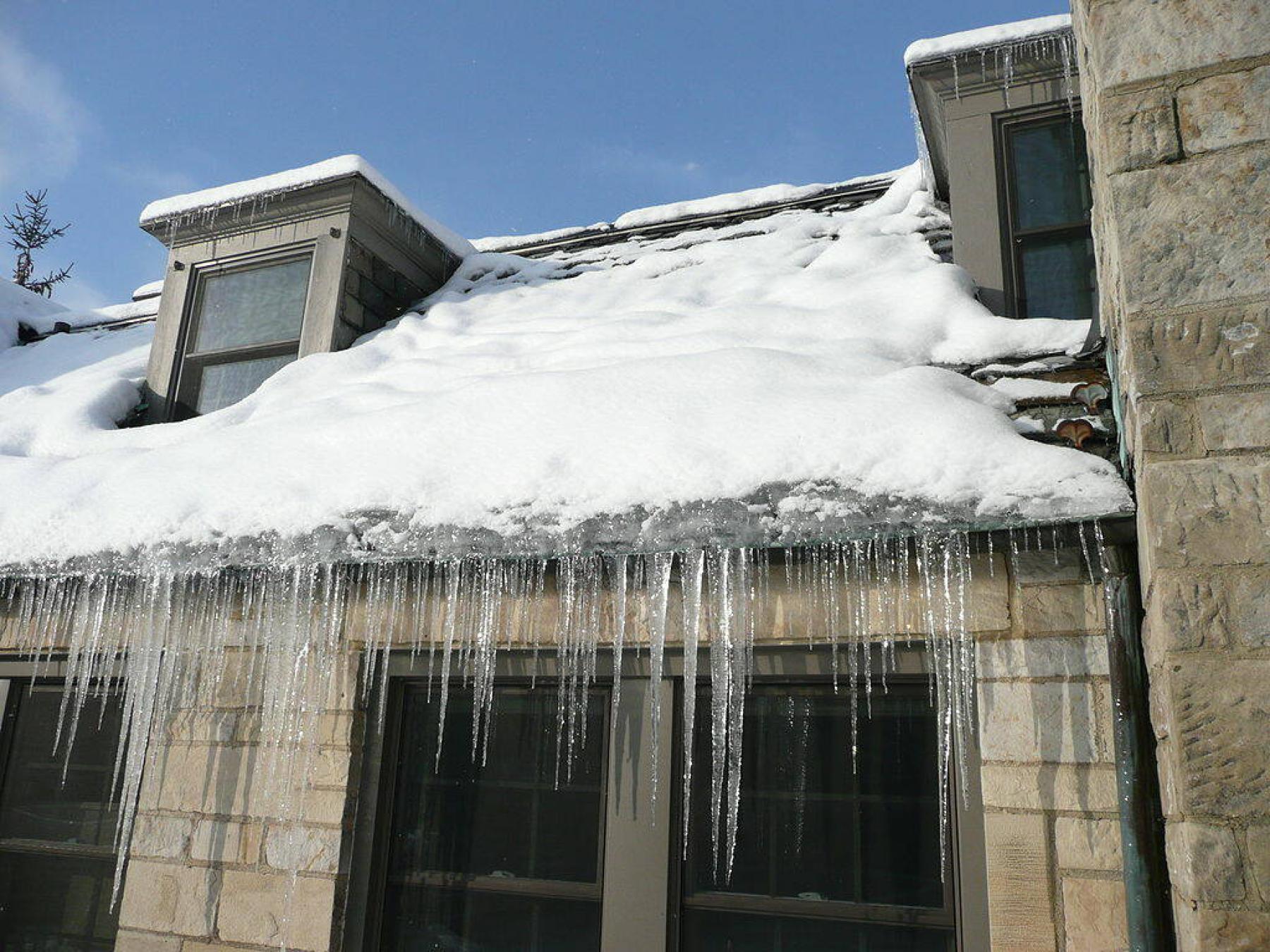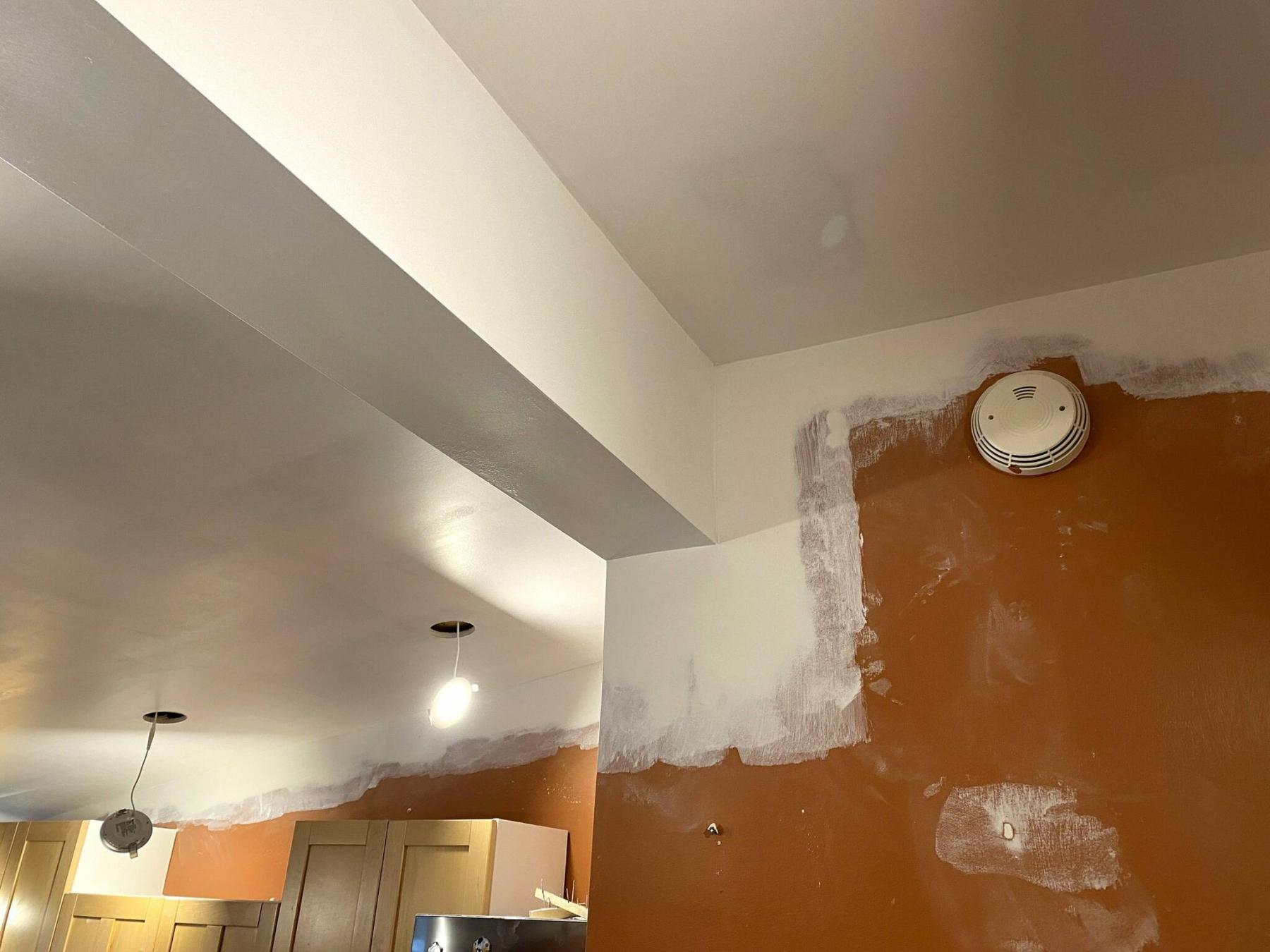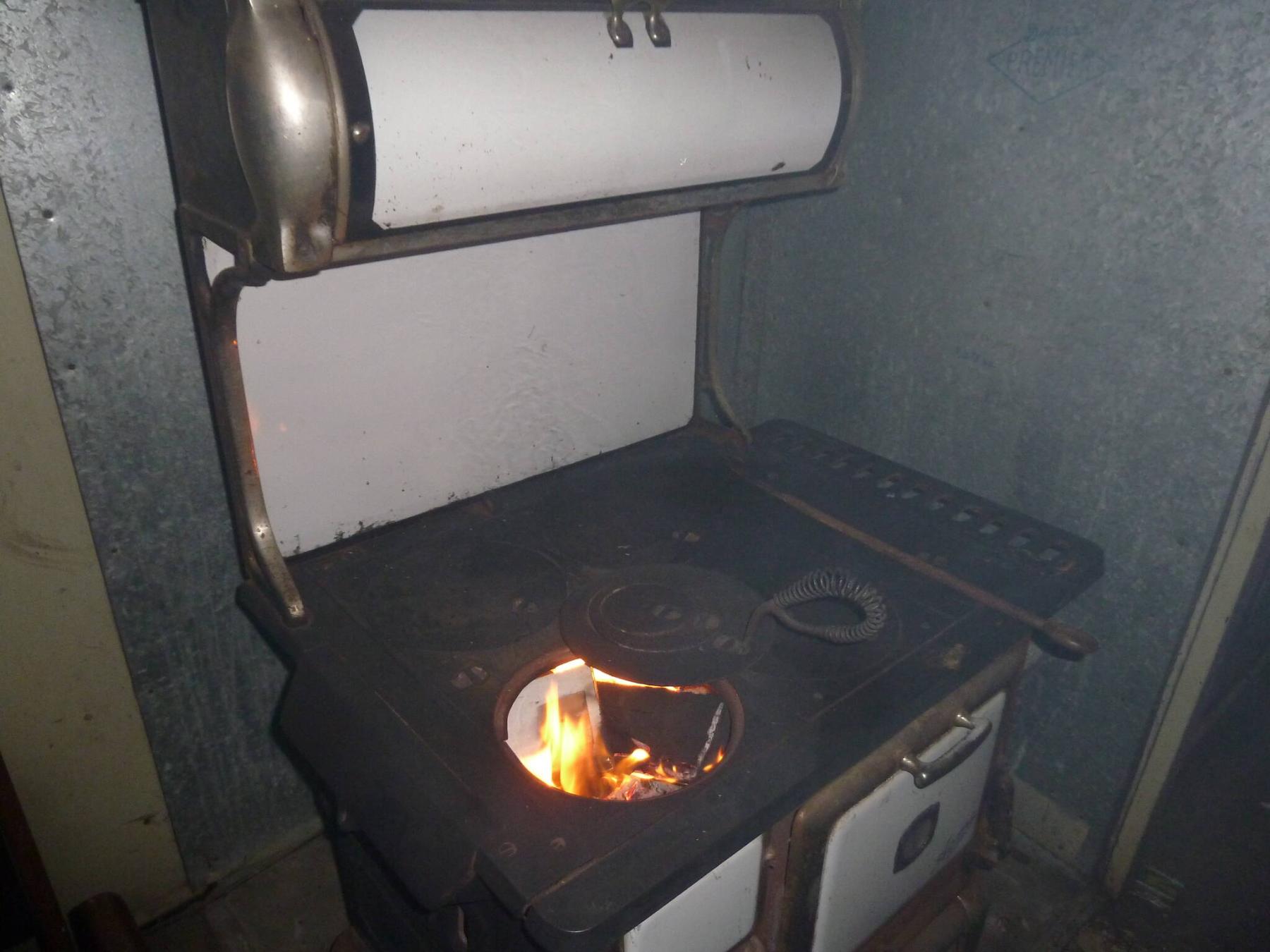Renovation & Design
Renovation & Design
Quick, tasty rub will flavour your pork
Question — I would like to prepare my own rub for meat. Can you give me an easy recipe that I can use on pork? — Blaine
Answer: Here is an easy recipe which is perfect for about six pounds of meat. Into a bowl combine one quarter cup sugar, 4 tbsp. black pepper, one tbsp. salt, one quarter cup paprika, 2 tsp. dry mustard and 2 tsp. cayenne pepper. Rub half of the mixture onto meat 12 hours prior to cooking. Rub on the other half right before cooking.
Question — Why do people deep fry turkeys instead of baking them. I was given a deep fryer specifically for this purpose, but I haven’t used it. Is it worth the effort? —Davey
Answer: I have a friend that heads down to the U.S. every November for American Thanksgiving just because her dad deep fries the turkey. She says it is the best way to prepare turkey and nothing beats the flavour.
Deep frying turkey is a Cajun tradition that produces juicy meat and crispy skin; many people agree it is out of this world. Dry the outside of your turkey as best as you can and be very careful lowering it into the hot oil.
Question — I have leftover turkey and I don’t want to waste it. Please tell me how to make homemade turkey stock like my grandma used to make. Thanks. — Salome
Answer: Great question! There are hundreds of variations for making homemade stock. Here is one recipe that will yield about two quarts of stock. Into a large stock pot drop two onions, two celery sticks and two carrots, all of which have been cut in half. Add one tsp. of each seasoning such as pepper, garlic, basil, oregano, salt and 1 bay leaf.
Remove as much fat as possible from bones and place turkey carcass into pot (a little meat on the bones will add to the flavour). Add enough water to cover bones. Bring to a boil and then reduce heat and let simmer for one to two hours. Strain contents through a fine colander into a proper container and leave to cool slightly. Refrigerate. Use a large spoon to skim fat off the surface.
At this point you can either make soup with the broth or freeze the broth. You can freeze the broth in ice-cube trays and add to soup as needed. Note: Taste the broth and add seasonings to your liking. Some people like more flavourings and salt than others.
Question — I had company and decided to barbecue chicken breast. It was horrible. Tasteless and dry are the best words to describe that embarrassing disaster. I barbecued the meat for only seven minutes on each side. Where did I go wrong? — Steve
Answer: Here’s my favourite method for barbecued chicken. Begin by marinating the chicken breast for at least a few hours in Italian salad dressing with salt and pepper. While still in marinade, bake chicken in the oven at 350 degrees for 30 minutes. Next, barbecue the chicken on medium heat for about four minutes per side. Cut through the thickest part of the meat to ensure no pink remains.
Fabulous Tips of the Week:
Whenever I have stains in teacups, I simply sprinkle baking soda into the cups and wipe with a dampened non-scratching scrubby pad. — Morgan
When a recipe calls for two egg whites, I cheat the recipe by only using one egg white. Instead, I add one teaspoon of cold water to one egg white. Beat vigorously and end up with double the amount of egg white. — Jordyn
I am a retired firefighter and want people to know the dangers of burning coloured newspapers and magazines. The ink emits dangerous chemicals which can be dangerous. — Jordyn
Note: Every user assumes all risks of injury or damage resulting from the implementation of any suggestions in this column. Test all products on an inconspicuous area first.
Have a great suggestion or tip? NEW EMAIL:
reenanerbas@outlook.com
Renovation & Design
Longevity should drive driveway repairs
Question — Please advise on paving over concrete driveways with asphalt, as is done on city streets and commercial parking lots.
Thank you, Michael Bazak.
Answer — With any driveway job, the condition of the base is the most important factor in determining the end results. If your current concrete driveway is good, the end result may turn out well, and if it is in poor condition, adding another layer on top will generally be a waste of money.
Comparing a commercial construction job, such as asphalt paving of city roads, with residential work can be full of potential pitfalls. To begin with, large construction jobs like those have a large budget, often with contingencies for overruns built in. For your home, you may have a limited budget, or at least one that will not see you spending significant money on an upgrade, only to have to redo it in a year or two. If a paving contractor covers a city street made of concrete with a new layer of asphalt, and it fails within a short period of time, it will likely be redone. This may be at the expense of the contractor or city coffers, but either way it will be corrected whether it was initially a good idea or bad one.
For large city road work, there may also be extra investigation and scrutiny prior to commencement of any plans. There will likely be soil engineers, city planners, and civil engineering consultants involved. They may take soil samples from the area to be upgraded, as well as inspecting the condition of the roadway to be repaved. The results may be critical in determining whether a simple topping of new asphalt will be sufficient over the existing surface, or whether complete removal, excavation, and granular fill installation is warranted, prior to completely new pavement. There may also be surveyors and concrete specialists hired for further analysis.
Any residential installation or upgrade to a driveway will be costly, but will not normally have the benefit of all the expert preliminary work stated above. You will be reliant on your own observations and the advice and reputation of the contractor. Common sense should always be employed and if something recommended by a contractor sounds too good to be true, or too cheap, it is likely a bad idea. As far as paving over an existing driveway, it may all depend on the condition of your current driveway. If the driveway has not shifted significantly, it may be possible to add another layer regardless of condition of the surface. If the surface is spalling or flaking, but does not have large cracks or uneven areas, it may make sense to take the less costly option. If the cracks are larger than 6mm, or the slab is broken into several pieces with different heights to each section, then that option may be out of the question.
Because we live in an area with primarily expansive clay soils, surface paving is always a bit of a crap-shoot. Because our soil’s stability depends on moisture content, temperature, frost effects, and other environmental factors, the base below any pavement is the key to longevity. That is why you will see a new road, or complete replacement, begin with excavation of the existing soil. Following that, various layers and sizes of granular fill are built up within the excavation area and then heavily compacted. That process minimizes the expansion and contraction of the natural soil under the roadway, by adding a well-draining substrate. The granular fill will not trap and hold excess moisture, like expanding clay soils, and will not shrink as much when dryer weather prevails. This will help prevent movement, which is the main issue facing surface pavement in our geographic area.
The same factors that affect the city streets will be a concern for your home’s driveway. If the original contractor did a thorough job of excavation, filling, and compaction prior to pouring your concrete slab, then it may still have its structural integrity. Even if it has small shrinkage cracks and surface deterioration from years of precipitation and sun exposure, the base may still be solid. In that situation, installing a thin layer of asphalt over top may be an inexpensive way to extend the life of your driveway. Be advised that asphalt does get softer on hot, sunny days, and may not be the most durable of surfaces in the long run.
There may also be other alternatives to asphalt for topping your older driveway, but the same goes for all of those options with regards to movement. Unfortunately, many of the better quality toppings will require that the concrete surface be smooth for proper adhesion. The ones that don’t have that requirement may need additional preparation and will generally have a higher cost. Either way, it is rarely a good investment to spend a few thousand dollars for a resurfacing job when the longevity may be very limited.
In making your decision whether to resurface your driveway, or replace it, the integrity of the current concrete should be the factor that steers you in the right direction. While it may seem like a bargain to add a layer of asphalt to spruce up your driveway, that money may be better spent on a complete upgrade, which will provide a much better end product that will last for a few decades, rather than a few years.
Ari Marantz is the owner of Trained Eye Home Inspection Ltd. and a Registered Home Inspector (RHI)(cahpi.ca). Questions can be emailed to the address below. Ari can be reached at 204-291-5358 or check out his website at trainedeye.ca.
trainedeye@iname.com
Renovation & Design
Freeze! Well, these foods and not those foods, anyway
Question – Which foods should only be eaten while fresh, instead of frozen? Candace
Answer – Except for eggs in shells and canned foods, many foods are freezable. It is important to note that some foods do not freeze well. Some foods change in taste, consistency, and texture, such as mayonnaise, cream sauce, cream cheese, creamed cottage cheese, sour cream, fried foods, and cake icing, made with egg white. Raw veggies such as lettuce lose their crispness.
Question – I would like to bake a Christmas Fruit Cake for the first time. The recipes I’ve looked up on-line are expensive and make large portions. Is it possible to half a recipe of eggs, it calls for five eggs (how do I divide)? Shirley
Answer – The easiest option; is to use 3 small eggs (instead of medium or large). The more technically accurate solution includes measuring. A large egg equals about 3 tbsp. of contents. If the recipe calls for both egg yolk and egg white; beat the egg and use one and a half tbsp. for the Christmas Fruit Cake recipe.
Question – I wonder if you can help me. I washed my puffer winter jacket which has vegan filler, and it smells very musty almost a chemical smell. I contacted the store, and they said they have never heard of this. The store suggested I rewash the jacket with fabric softener, to get rid of smell. I put it outside in the cold for three days and it still smells. I was told they line their jackets with recycled plastic from bottles. Hope you can give me some suggestions. I really enjoy reading your column in the Free Press.
Answer – Depending on the chemicals and dyes the manufacturer used in making the jacket, the smell may be permanent. Many people have experienced great success by soaking smelly fabrics in a strong concentration of liquid detergent and water, or 50/50 water and vinegar. Leave the jacket for a few hours before rewashing.
Feedback, regarding dyeing polyester napkins
Comment: I was always under the impression that polyester does not take dye? Dorothy
Response: When dyeing synthetic fabrics, Rit DyeMore is the best product to choose. For the most successful result when treating manmade fibres, select dyes that specify they work for fabrics such as polyester, acetate and acrylic.
Vincent’s Smart Tip of the Week
Rolling out dry bread to make crumbs can be a messy task. Eliminate the mess by placing the dry bread in a breakfast cereal liner bag. These bags are sturdy and will not tear. They are also great for storing the crumbs. Note: Be sure the bread is very dry, otherwise, it will compress into small wads. — Vincent
Decorate Your Office for Christmas
At the company where I work, I stuck 1,000 post-it notes onto the wall in the shape of a Christmas tree. I stuck a paper star on top. Without even requesting it, staff started writing encouraging holiday messages to other people in the office. This has increased morale during a difficult time of year for some of us. — Larissa
● ● ●
Since I am working through the holidays, I decided to make the most of it. I shaped cardboard into a house and a gingerbread boy. I completely transformed my cubicle into a gingerbread house. I bought battery powered lights and used different coloured paper to decorate the house. I glued candy onto the cardboard and added a table with a big bowl of candy on it for employees to snack on. So fun and such a great way to bring a smile onto so many faces. — Cameron
● ● ●
We always have an office decorating contest at work, and last year I actually won! I used white paper to cut out fancy snowflakes; I hung 50 of them around my desk and it actually looked like a winter wonderland! — Clara
● ● ●
Note: Every user assumes all risks of injury or damage resulting from the implementation of any suggestions in this column. Test all products on an inconspicuous area first.
Have a great suggestion or tip? My new email address is reenanerbas@outlook.com
Renovation & Design
Keep moisture out of your basement with these three steps
Questions: I’m sure that I must be one of many homeowners with the same question. Last September we moved into our new house in Ridgewood West from the temperate climate of British Columbia. I am worried about the very deep snow drifts in the back yard, and to a lesser extent between my neighbours, and the basement window wells. For the upcoming spring thaw, other than extending the sump pump discharge pipe to the roadside, what other measures do I need to take to avoid inside water penetration for my house?
Regards, John Mason
Answer: Prevention of water from melting snow entering your foundation should be addressed long before the first snow falls. Maintaining good grading, snow clearing, and roof water management are the keys to a dry basement in the spring.
I commend you on your pro-active approach to prevention of problems relating to moisture issues, possible during next year’s spring thaw. For several years, we have had below average precipitation, especially winter snow. Last winter’s record snowfall came as a bit of a wake-up call for many homeowners who experienced wet basements, many for the first time, when all that snow melted. After the weather warmed up, significant rainfall also contributed to oversaturation of our soil, which caused even more basement seepage. This caused most reputable foundation contractors to become overwhelmed, with many not able to keep up with the demand for their services. Some homeowners may still be waiting until next spring for their already booked excavation and repairs from last year. If a recurrence of last winter’s frequent snowfall is seen, that delay may even grow.
So, what can you do to prevent this from happening to your home? The simple answer is to have a good maintenance plan for water management on the exterior of your house. This begins with ensuring that your eavestroughs and downspouts are in good condition, and clear of debris. Because of the location of that system, high above the ground, we often don’t realize there is a problem until a heavy rainfall happens. Before the temperature drops, in the autumn, and the snow arrives, a good inspection of this critical water management system should be done. This will require climbing up on a well-secured ladder to visually inspect all the gutters.
Any loose or sagging sections should be re-secured and broken brackets or fasteners replaced. Sometimes these troughs loosen due to cracks or other deterioration to the fascia behind. In that situation, moving the brackets a few centimeters laterally may allow you to easily reattach it to more solid wood backing. If the fascia is all rotted, due to deteriorated roofing or other defects, removal and replacement of the eavestroughs may be warranted. Once the troughs are all secure and properly sloped, the next stage is to ensure they are clear and clean.
In many areas, especially with lots of mature trees, the eavestroughs will become blocked, primarily at the drops above the downspouts. Clearing out this tree litter, and other debris like shingle granules, normally requires some manual labour. Use a good pair of waterproof gloves, and a trowel or other small garden tool, to scoop out the soggy gunk from the bottom of all the troughs. This can be deposited in an old garbage can, paper leaf bag, or other container, and left out for the city’s yard waste disposal pickup during the appropriate season. This will ensure it is composted at the landfill site and not just added to household garbage. Alternatively, you can dump it into your own composter, as long as it is not full of roofing granules. Washing the troughs with your hose nozzle, inside and out, after clearing should help ensure they are debris-free and the downspouts are properly draining.
The next area of concern with regard to basement leakage is the grading of the soil around the entire home. Most houses will have good grading and effective swales when they are newly built, but that will quickly change due to erosion and compaction, over the first few years after completion. To compensate for this, regular regrading with new topsoil, granular fill, and other landscaping materials will be needed. Ensuring you move your sump pump discharge hose to different areas of your yard, as you have noted, will help extend the life of the grading efforts. Also, regular seeding of grass or other low vegetation in these areas will help hold the soil in place and prevent erosion and excess drying in the summer.
The final piece of the dry basement puzzle is good snow removal. If we have a winter like last year, or even a moderate one with high winds, drifting of snow beside the foundation is a concern. Clearing away snow sitting directly on the foundation walls, or inside filled window wells, should be done regularly throughout the winter. Once spring warming begins, removal of thick snow to the front or back of your property should help further. It will minimize excess moisture that may pool on the frozen ground, and also facilitate quicker thawing of the soil. This may be accomplished with a powerful snowblower, or manually with a good old-fashioned shovel and sled.
Keeping your basement high and dry next spring will depend on a couple of maintenance factors accomplished last fall, good grading and eavestrough maintenance. The third item to help this task is to remove excess snow from directly around the house, just as the spring thaw begins. Paying attention to these three details should certainly help prevent moisture intrusion through the foundation, as the weather warms.
Ari Marantz is the owner of Trained Eye Home Inspection Ltd. and a Registered Home Inspector (RHI)(cahpi.ca). Questions can be emailed to the address below. Ari can be reached at 204-291-5358 or check out his website at trainedeye.ca.
trainedeye@iname.com







